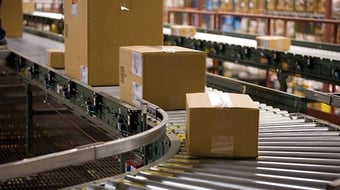
Packaging design. When you read those words, what comes to mind? The appearance of the package? How it looks on the shelf? The colors, branding, and overall aesthetic? Those are all important components, but packaging design goes well beyond the visual.
An effective package needs to look good. It needs to pop off the shelf and catch your buyer’s attention. But it also has to be functional. It needs to protect and showcase your product. Even more, it needs to be produced in a way that is flexible enough to meet changing demand and in a manner that won’t break your budget.
When it comes to packaging design, the actual aesthetics are just the tip of the iceberg. There are a number of functional and process-oriented questions to consider as you move through the design process. Here are a few important ideas we consider here at Deufol when we begin a new design project.
1. What is the budget priority: Price per unit or capital investment?
The design phase is as much about the packaging process as it about the package itself. Where will you package the product? How will you produce the packaging? Do you want a fully automated solution or something that requires less capital investment?
Often, these decisions are driven by budget. For example, many of our customers seek to strike a balance between driving down per unit packaging costs and limiting capital investment.
A fully automated system will reduce labor costs and keep per unit pricing in check. But it often requires a substantial investment. On the other hand, we can also build a largely manual system that requires little upfront investment. However, it would require a significant amount of labor, increasing the per unit cost.
At Deufol, we produce automated systems, mostly manual systems, and even a variety of semi-automated systems to manage both capital investment and per unit cost. We have our own, in-house machine shop where we can build any type of equipment necessary to meet our clients’ goals.
2. How many different versions of the package could you need?
One of the biggest challenges in packaging is adjusting to meet rapidly changing customer demands. If you distribute through retailers, especially big-box retailers, you may know this challenge all too well.
One retailer may want different packaging than others. Another retailer may give you an endcap that requires packaging changes. You may have an opportunity for promotion in the aisle, but you also need a pop-up display to make it happen.
Depending on your product, you could have seasonal changes. Or you may possibly alter your product to do tie-ins with complementary products or brands.
It’s wise to project all of these possible variations in advance so you can build a packaging process that is nimble enough to change on the fly. During your design discussions with your packager, think about all of the possible versions of your packaging you may need. That will help you respond quickly when adjustments are needed.
 For example, one unique option we offer to customers is the ability to warehouse their inventory in our location and distribute from our facility. When a packaging change is needed on short-notice, we can complete the change and then get the product and the new packaging out the door. If we know upfront that there could be changes needed with little notice, then we can design a packaging process in our facility that can accommodate those changes.
For example, one unique option we offer to customers is the ability to warehouse their inventory in our location and distribute from our facility. When a packaging change is needed on short-notice, we can complete the change and then get the product and the new packaging out the door. If we know upfront that there could be changes needed with little notice, then we can design a packaging process in our facility that can accommodate those changes.
3. What is most important to your customer?
Packaging plays a big role in which product a customer chooses. However, it’s not all about design. We once worked with a company that felt strongly that they needed a flashy visual design to move their product. Through our design discussions and market research, the client eventually realized that transparent packaging was more important than an eye-catching design. The customers wanted to see the product in the packaging before they made the purchase.
There are all kinds of trends impacting the customer’s buying decision today. For some customers, sustainability and environmental protection are important. In those cases, the design process should include renewable and environmentally-friendly materials.
In other instances, customers may want detailed information about ingredients or materials used in the product’s production. A design process then needs to be designed to make sure the right information ends up on the right product package.
For other products, safety could be a major concern. You may need to balance the security of the product with ease of use by the customer. You want something that will keep your product safe but also won’t be a major inconvenience for your customer to open.
The key to all of this is working with a packaging partner who has engineers who are experienced designing packaging and processes for a wide range of companies and industries. When it’s time for you to design new packaging, don’t just focus on the visuals. Functionality and process may play in even bigger role in determining whether your packaging is successful.





Let Us Know What You Thought about this Post.
Put your Comment Below.